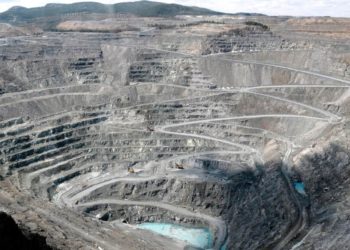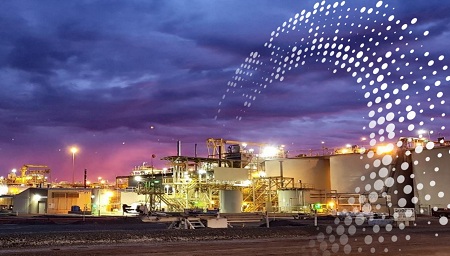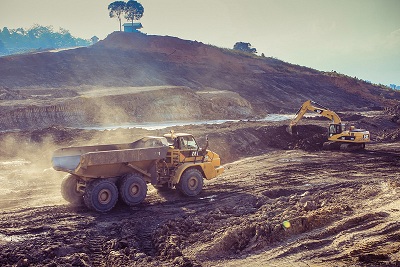The Kolomela mine is located 22km from Postmasburg in the Northern Cape province of South Africa. The mine produces direct shipping iron ore.
“Kolomela’s life is estimated to be 29 years, with potential for further expansion.”
The Kolomela mine is operated by the Anglo American group company Kumba Iron Ore through its subsidiary Sishen Iron Ore Company (SIOC). SIOC is owned 73.9% by Kumba and 26.1% by Black Economic Empowerment (BEE) shareholders.
Anglo American holds a 69.7% stake in Kumba. Industrial Development Corporation holds a 12.9% stake and the minority interests account for the remaining 17.4% stake in Kumba.
The Kolomela mine consists of seven open pits including Leeuwfontein, Welgevonden, Kapstevel and Klipbankfontein. The mine started commercial production in December 2011 and was awarded ISO 14001 certification in July 2013. Kolomela’s life is estimated to be 29 years, with potential for further expansion.
Development of Kolomela mine
Formerly known as the Sishen South project, the Kolomela mine project is a direct shipping iron ore project completed in late 2011. The project achieved surpassed the expected full-scale production capacity of nine million tonnes per annum (mtpa) in 2013.
The first impact studies of the project were carried out in 2001, although the exploration works for the project were undertaken in the 1950s.
Related project
Carajas Iron Ore Mine, Brazil
The Carajás Mine is the world’s largest iron ore mine and is located in the state of Para in northern Brazil.
The construction works of the R8.46bn ($933m) project started in mid-2008 and were completed by July 2011.
Hatch provided the engineering, procurement, project and construction management (EPCM) services for the direct shipping iron ore project with a cost implication of R2.5bn ($276m). The company was responsible for delivering the crushing and sizing plant, stockyard facilities, as well as the rail truck loading station at Kolomela.
Concor Roads & Earthworks, a unit of Murray & Roberts Construction, carried out the earth works as well the construction of a new railway line connecting Kolomela with the Sishen-Saldanha export line. It also received several other contracts in 2012 for additional construction works of the project.
Kolomela mine geology and ore details
The Kolomela mine comprises three separate ore bodies located on the southern tilt of the iron bearing belt that hosts the Sishen deposit towards the north. The lithologies are identified to be of Griqualand West Supergroup. The ore bodies delineate the western margin of the Kaapvaal Craton in the Northern Cape province.
“The lump to fine ratio of Kolomela’s ore is 60:40.”
The Kolomela ore bodies measure up to 2km in length, 400m in width and 300m in depth. The deposit consists of four varieties of high-grade haematite ores, namely clastic-textured (29%), laminated (53%), collapse breccia (10%) and conglomeratic (8%).
The lump to fine ratio of Kolomela’s ore is 60:40.
Iron ore reserves at Kolomela
The estimated ore reserves at Kolomela stood at 200mt grading 64.4% Fe as of 31 December 2013. The reserves comprise 101.3mt of proved reserves grading 64.4% Fe and 98.7mt of probable reserves grading 64.5% Fe.
Kolomela mine production
Kolomela mine produces 64% Fe lump and 63.5% Fe fine ore. The mine produced 10.8mt of direct shipping iron ore in 2013 with a stripping ratio of 3.5. The cash cost per tonne produced during the year was R181.81.
Iron ore mining and processing at Kolomela
Kolomela employs conventional open-pit mining method involving drilling, blasting, shovel-and-truck loading and hauling.
The drilling contract for the mine has been awarded to Master Drilling. The mine is operated by 1,065 permanent employees and 1,649 contractors.
Related project
Kalia Iron Ore Project, Guinea
The Kalia iron ore mine is a 50mt/y project under development in the Republic of Guinea, West Africa.
The extracted ore from the mine is sent to the nearby processing plant. The ore undergoes primary, secondary and tertiary crushing at the plant. The crushed ore is scalped and screened before being sent to the stockyard.
The mine has a stacker-reclaiming facility at which different grades of processed ore are blended to ensure the grade requirements of the clients. Sishen mine’s products are also blended with the mine’s products before final shipment of the ore.
The export ore is sent via a conveyer to the load-out terminal of Kolomela. From there, it is transported via the newly constructed 36km rail line linking the Sishen-Saldanha export line connected to the Saldanha Bay Port.
A fatigue centre designed to provide facilities for fatigue breaks was completed at the mine in 2013. It is expected to reduce fatigue and workplace incidents.
Kolomela expansion project details
The Kolomela expansion project aims to extract 150mt of iron ore resource falling outside the current life of mine (LoM) plan and introduce a beneficiation facility for Kolomela mining operation.
The concept study of the expansion project has been completed. The project is currently in pre-feasibility stage. It is expected to start production in 2017.
The Kolomela expansion project is anticipated to increase the total production capacity of the mine by 6mtpa, in addition to extending Kolomela’s LoM.








